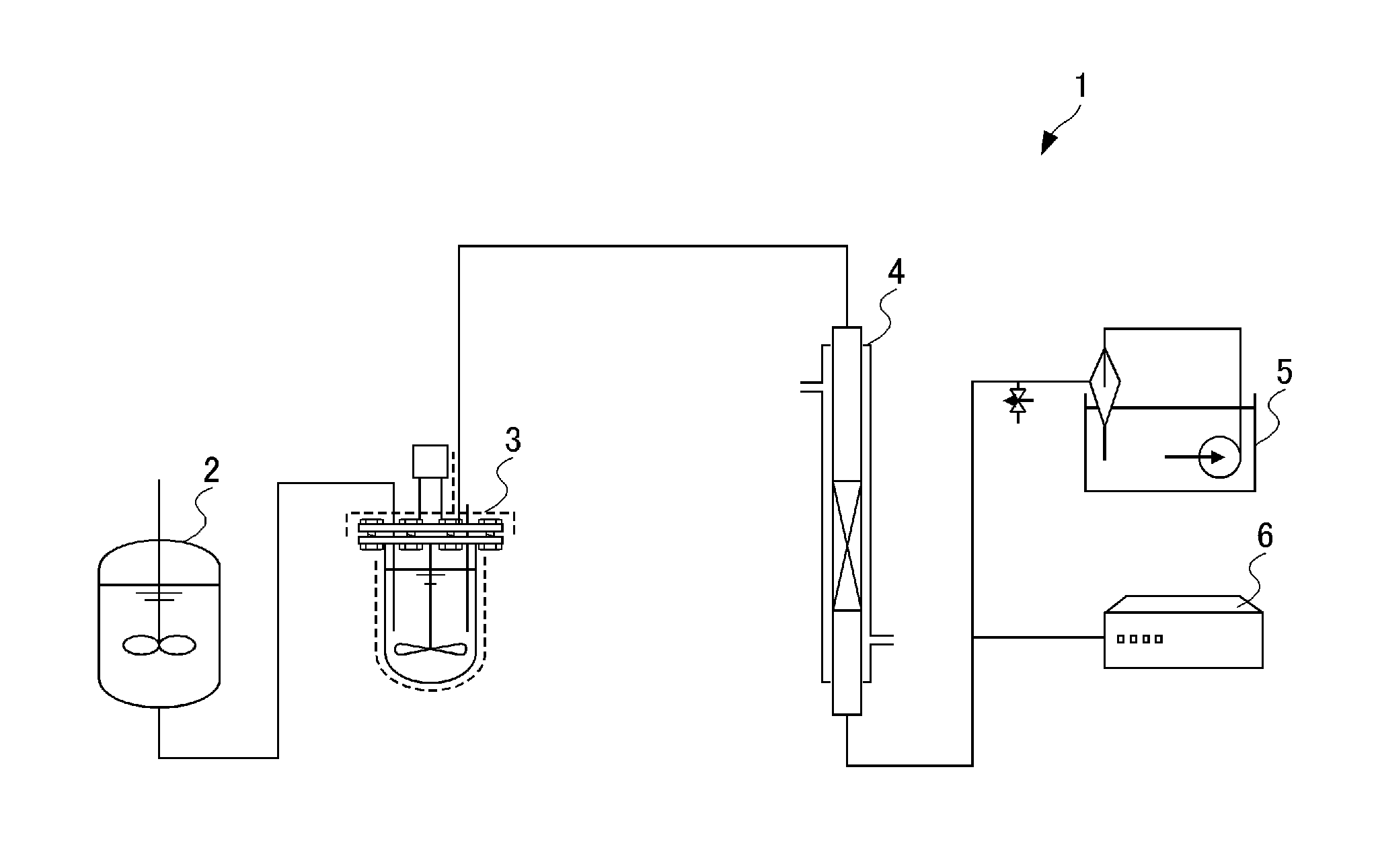Solid phosphoric acid catalyst, and method for producing trioxane
a solid phosphoric acid catalyst and trioxane technology, applied in the direction of catalyst activation/preparation, physical/chemical process catalysts, organic chemistry, etc., can solve the problems of large water deactivation of the catalyst, high energy consumption of the reaction product containing water, and extremely low reaction equilibrium concentration in the liquid phase, so as to effectively restrict the discoloration of the catalyst or deposition, the effect of quick reaction
- Summary
- Abstract
- Description
- Claims
- Application Information
AI Technical Summary
Benefits of technology
Problems solved by technology
Method used
Image
Examples
example 1
[0073]After spraying a quantity of a phosphoric acid solution (orthophosphoric acid 75% aqueous solution; made by Wako Pure Chemical Industries, Ltd., reagent special grade) onto spherical aluminum hydrosilicate (made by Clariant Catalysts K.K.) with an average particle diameter of 5.4 mm at 80° C. under vacuum conditions such that 55 parts by mass of the carrier were impregnated with 45 parts by mass of the phosphoric acid, by sintering at 220° C. in air, the solid phosphoric acid catalyst of Example 1 was obtained.
example 2
[0074]After impregnating by spraying a prescribed amount of a phosphoric acid aqueous solution at 80° C. under vacuum conditions onto the above spherical aluminum hydrosilicate, by sintering at 320° C. in air, the solid phosphoric acid catalyst of Example 2 was obtained.
example 3
[0075]After impregnating by spraying a prescribed amount of the above phosphoric acid aqueous solution at 80° C. under vacuum conditions onto the above spherical aluminum hydrosilicate, by sintering at 500° C. in air, the solid phosphoric acid catalyst of Example 3 was obtained.
PUM
| Property | Measurement | Unit |
|---|---|---|
| specific surface area | aaaaa | aaaaa |
| particle diameter | aaaaa | aaaaa |
| inner diameter | aaaaa | aaaaa |
Abstract
Description
Claims
Application Information
 Login to View More
Login to View More - R&D
- Intellectual Property
- Life Sciences
- Materials
- Tech Scout
- Unparalleled Data Quality
- Higher Quality Content
- 60% Fewer Hallucinations
Browse by: Latest US Patents, China's latest patents, Technical Efficacy Thesaurus, Application Domain, Technology Topic, Popular Technical Reports.
© 2025 PatSnap. All rights reserved.Legal|Privacy policy|Modern Slavery Act Transparency Statement|Sitemap|About US| Contact US: help@patsnap.com

